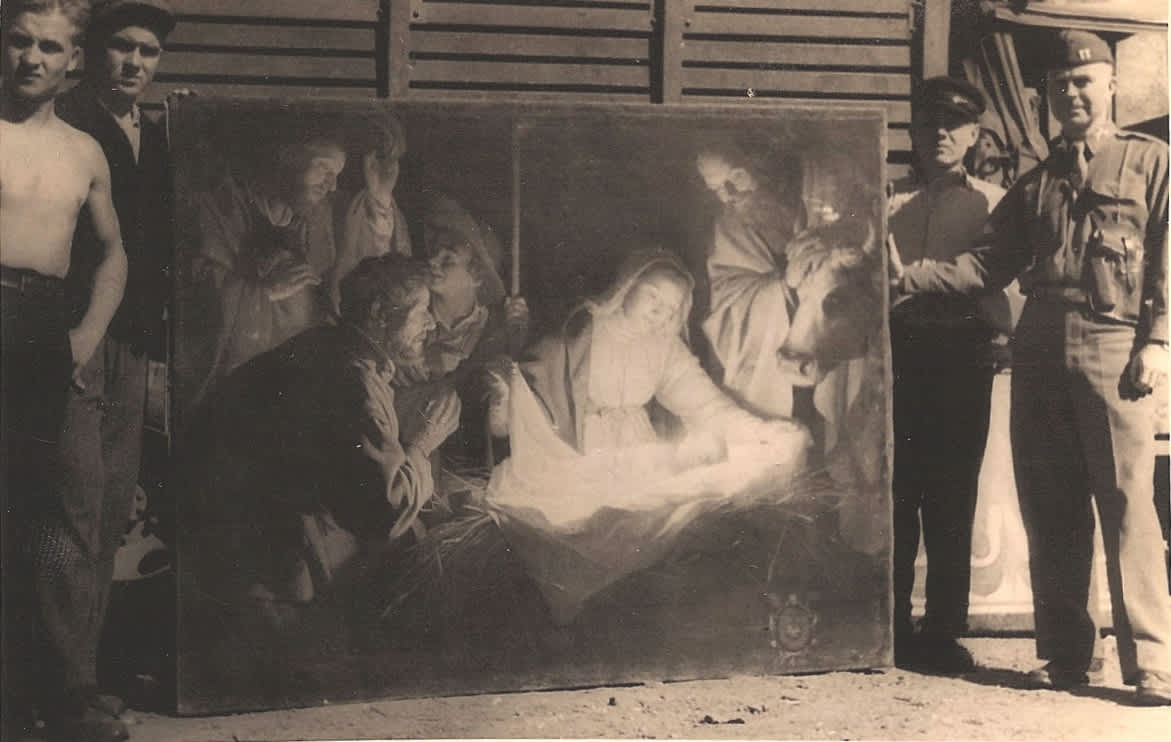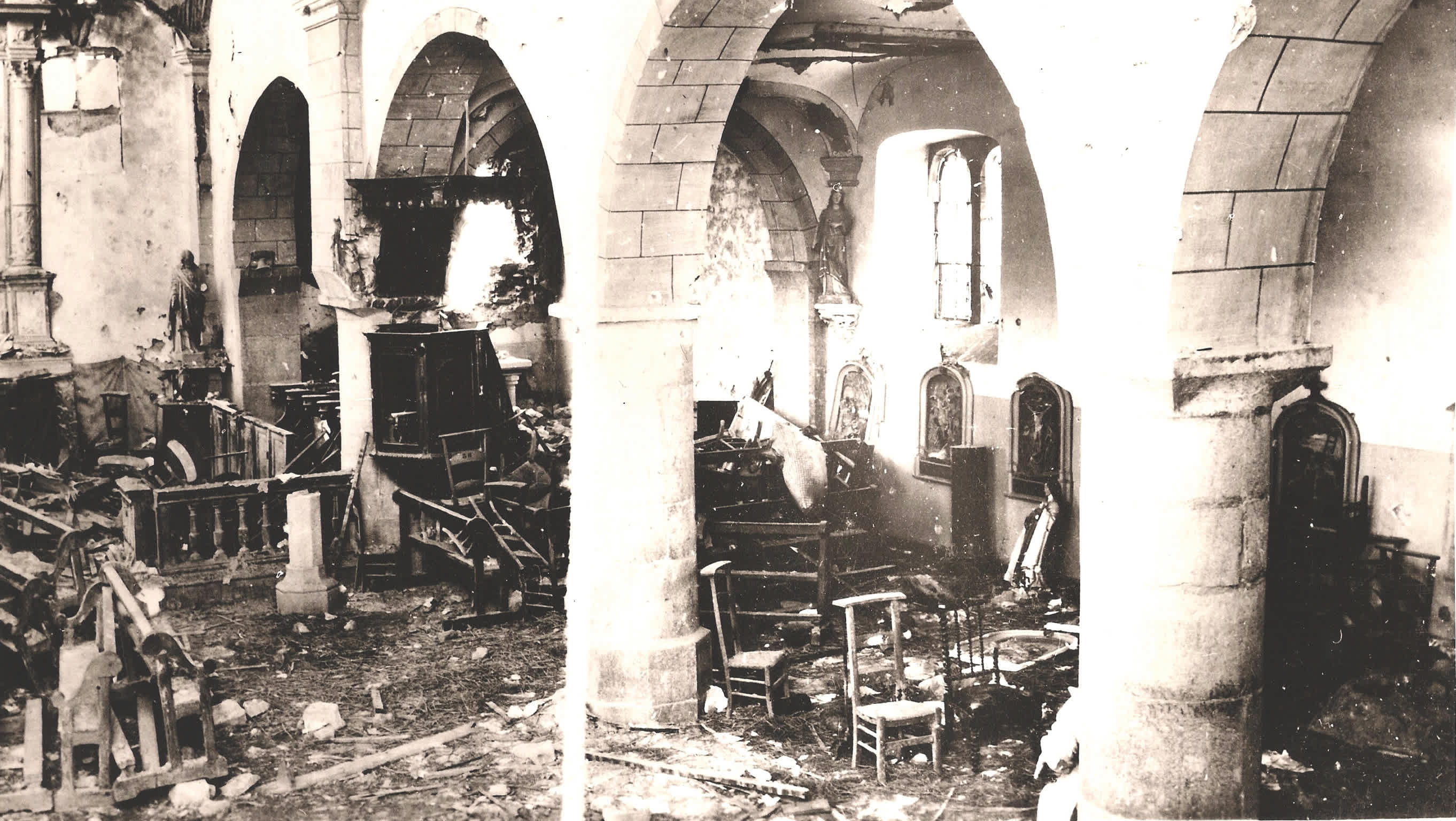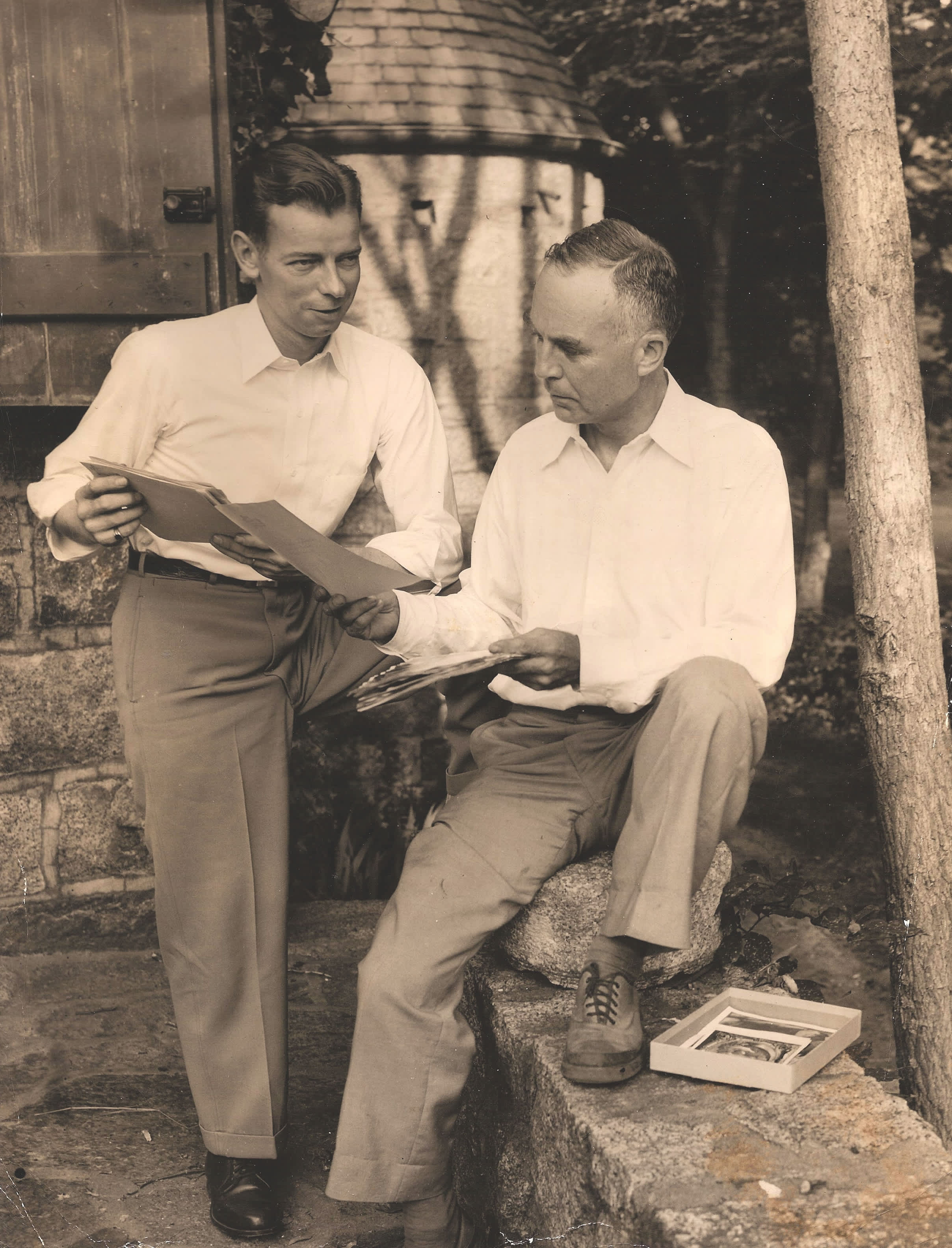
(Photo: Captain Walker Hancock [far right], with Russian helpers, rescued this painting of Joseph, Mary, Jesus, and the shepherds from a cave near the mine at Siegen. [Monuments Men True Story])
The true story of The Monuments Men was little known before actor George Clooney brought it to Hollywood.
While the screenplay "took creative license with the characters and their stories," according to Walker Hancock's daughter, Deanie Hancock French, "The great service these individuals provided the world is invaluable, and has never been known on such a grand scale."
The True Story of The Monuments Men
In 1944, Hancock, along with five other Monuments Men, walked away from their artistic careers and families in order to track down and rescue 6 million pieces of European art. They had the support of President Roosevelt and General Eisenhower, but they had no authority, no vehicles and no gasoline.
They didn't even have a map.
"My father, along with the other men who were either artists, architects or museum curators, began their journeys in Shrivenham, England, each taking different routes," Deanie explains. "My father traveled from Shrivenham to Paris, then Chartres, France; Aachen, Germany; La Gleize, Belgium (site of The Battle of the Bulge); and ending in Bernterode, Germany," she continues.
Among the many works salvaged by Hancock during his trek through war-torn Europe were Beethoven's manuscripts, relics of Charlemagne and Dutch masterpieces including Rembrandt's "The Night Watch."

(Photo: Inside war-torn cathedral, La Gleize, Belgium, 1945, after the Battle of the Bulge.[Monuments Men True Story])
The True Nature of Walker Hancock
In the movie, Hancock was played by John Goodman, "A man in stature quite unlike my father," Deanie points out. "My father was a quiet, trim man. He loved poetry and often recited Shakespeare. He was a faithful churchgoer. He memorized many Psalms. He loved the language of the King James Bible." A book of prayers was often by his bedside.
While a private in the army in 1942 (at 41 years of age), news came that Hancock had won a competition to design the Air Medal to be presented to all fliers in the armed services. He was sent from Louisiana to Washington, D.C., to the Army War College, then to the Pentagon, where he interrogated Italian prisoners of war, ("Which he hated doing," Deanie interjects) where he learned of the monuments, fine arts and archives operation.

(Photo: Young Deanie Hancock with her parents and their friends.[Monuments Men True Story])
"After the war, Pop received a most significant commission: the Pennsylvania Railroad War Memorial, a 29-foot bronze statue of the Archangel Michael raising the body of a dead soldier to heaven. That statue is still housed at the 30th Street Station, in Philadelphia. To this day, many people choose to sit in the presence of that statue for solace," Deanie shares.
Looking Back at Walker Hancock, the Artist and the Father

"My first memories of my father are of him sculpting. He was usually working at his studio, just a walk up the hill from our house in Lanesville [section of Gloucester, Massachusetts]," Deanie said.
"Once a month, I think, he made the long commute to the Pennsylvania Academy of Fine Arts. He took us with him to Rome when he was sculptor in residence at the American Academy, three different years."
Hancock studied with the sculptor Charles Grafly, and later became close friends with Paul Manship and George Demetrios, also famous American sculptors.
"I remember my father working on some of his more famous pieces, including his portraits of Robert Frost, Presidents Dwight D. Eisenhower and George H. W. Bush, and Supreme Court Justices. His sculptures include "Christ in Majesty" and "President Lincoln" for the Washington Cathedral; "Christ in the Garden of Gethsemane" for the Monastery in Kentucky; and "General Douglas MacArthur" and "Flight" for West Point," says Deanie.
Remembering Walker and His Existing Art
Many of Hancock's major works are in larger cities in public and private collections. His sculptures can be seen at the National Cathedral in Washington, D.C., the Pennsylvania Academy of Fine Arts, the Cape Ann Museum in Gloucester, Massachusetts, the Museum of Fine Arts in Boston, and in Stone Mountain, Georgia.
They provide a way for us to remember those people and events that were carved into stone, sculpted in clay, and cast into bronze by an artist faithful to his family, his God, and country. An everlasting monuments man.
Article courtesy of Mature Living magazine.